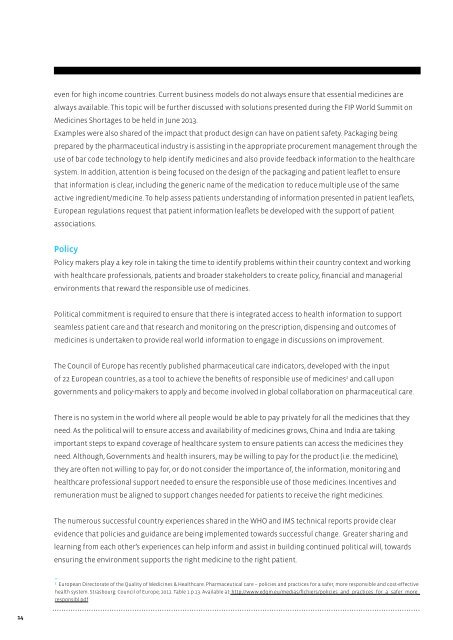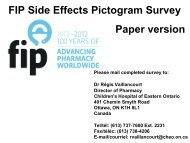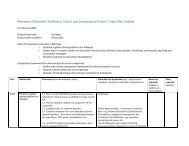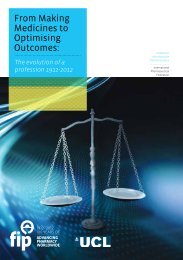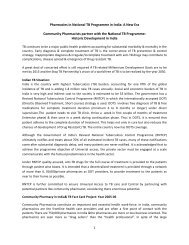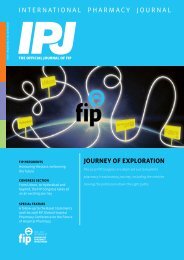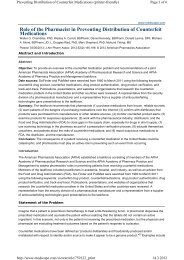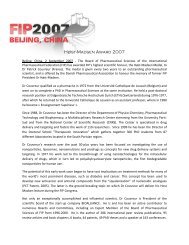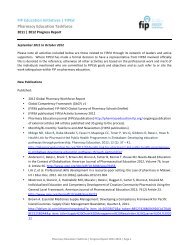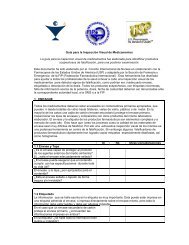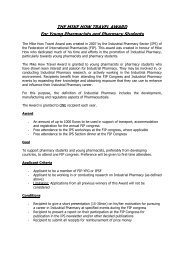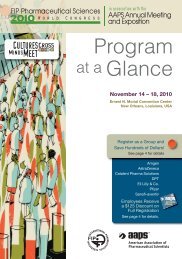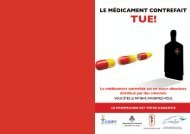here - FIP
here - FIP
here - FIP
You also want an ePaper? Increase the reach of your titles
YUMPU automatically turns print PDFs into web optimized ePapers that Google loves.
14<br />
even for high income countries. Current business models do not always ensure that essential medicines are<br />
always available. This topic will be further discussed with solutions presented during the <strong>FIP</strong> World Summit on<br />
Medicines Shortages to be held in June 2013.<br />
Examples were also shared of the impact that product design can have on patient safety. Packaging being<br />
prepared by the pharmaceutical industry is assisting in the appropriate procurement management through the<br />
use of bar code technology to help identify medicines and also provide feedback information to the healthcare<br />
system. In addition, attention is being focused on the design of the packaging and patient leaflet to ensure<br />
that information is clear, including the generic name of the medication to reduce multiple use of the same<br />
active ingredient/medicine. To help assess patients understanding of information presented in patient leaflets,<br />
European regulations request that patient information leaflets be developed with the support of patient<br />
associations.<br />
Policy<br />
Policy makers play a key role in taking the time to identify problems within their country context and working<br />
with healthcare professionals, patients and broader stakeholders to create policy, financial and managerial<br />
environments that reward the responsible use of medicines.<br />
Political commitment is required to ensure that t<strong>here</strong> is integrated access to health information to support<br />
seamless patient care and that research and monitoring on the prescription, dispensing and outcomes of<br />
medicines is undertaken to provide real world information to engage in discussions on improvement.<br />
The Council of Europe has recently published pharmaceutical care indicators, developed with the input<br />
of 22 European countries, as a tool to achieve the benefits of responsible use of medicines2 and call upon<br />
governments and policy-makers to apply and become involved in global collaboration on pharmaceutical care.<br />
T<strong>here</strong> is no system in the world w<strong>here</strong> all people would be able to pay privately for all the medicines that they<br />
need. As the political will to ensure access and availability of medicines grows, China and India are taking<br />
important steps to expand coverage of healthcare system to ensure patients can access the medicines they<br />
need. Although, Governments and health insurers, may be willing to pay for the product (i.e. the medicine),<br />
they are often not willing to pay for, or do not consider the importance of, the information, monitoring and<br />
healthcare professional support needed to ensure the responsible use of those medicines. Incentives and<br />
remuneration must be aligned to support changes needed for patients to receive the right medicines.<br />
The numerous successful country experiences shared in the WHO and IMS technical reports provide clear<br />
evidence that policies and guidance are being implemented towards successful change. Greater sharing and<br />
learning from each other’s experiences can help inform and assist in building continued political will, towards<br />
ensuring the environment supports the right medicine to the right patient.<br />
_<br />
2 European Directorate of the Quality of Medicines & Healthcare. Pharmaceutical care – policies and practices for a safer, more responsible and cost-effective<br />
health system. Strasbourg: Council of Europe; 2012. Table 1 p.13. Available at: http://www.edqm.eu/medias/fichiers/policies_and_practices_for_a_safer_more_<br />
responsibl.pdf


